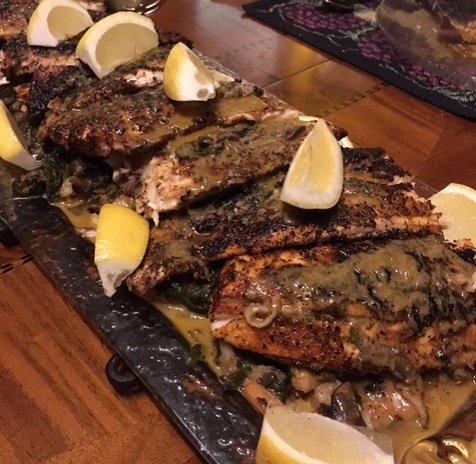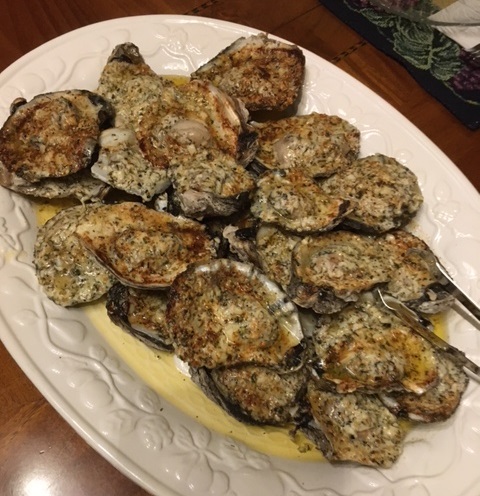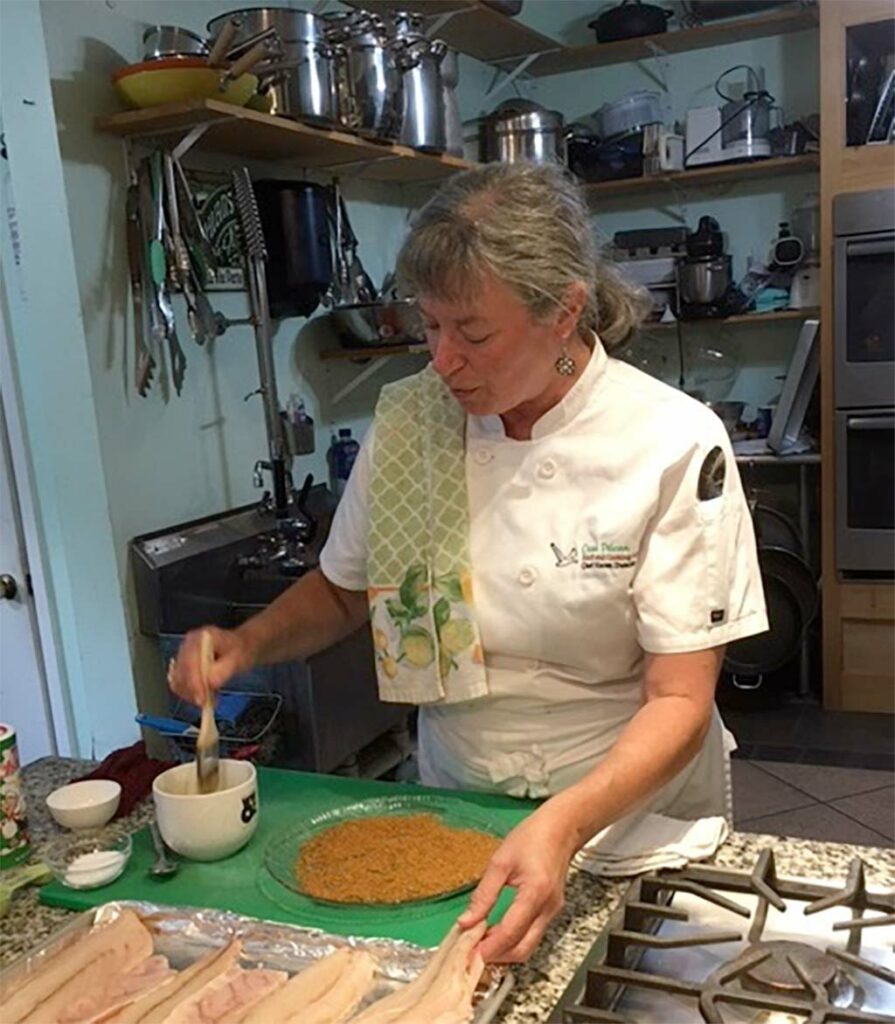Chef Karen Duncan takes a platter from the fridge with several raw fish filets arranged in a neat row. “Smell this,” she says. We don’t smell anything, and that’s the point. Fresh fish is virtually odorless, and these were pulled from the waters off the New Orleans coast just a few hours ago.
Chef Karen is a sommelier and retired restaurateur who studied at France’s Le Cordon Bleu, but her passion is all things Cajun and Creole. Today, she’s semi-retired and operates Casa Pelican B&B and Cooking School in her historic home in New Orleans’ Algiers Point neighborhood, a short ferry ride across the Mississippi from the French Quarter.
Cajun vs. Creole
Chef Karen explains that Cajun cooking developed when the Acadians (French settlers from Canada) were deported to Louisiana in the late 1770s and adapted their cuisine based on the ingredients they found there. Cajun cooking is characterized by local foods with simple preparations and bold flavors. Louisiana Creole cooking, on the other hand, takes its origin from people whose roots trace directly back to European ancestors. Think rich sauces, fancy preparations and butter, butter, butter.
We’re learning that cooking classes at Casa Pelican are as much about following your senses as they are about the recipes. Our menu today is a mix of local Cajun and Creole specialties: Blackened Gulf Fish Pontchartrain, Crawfish Étouffée, broiled oysters and Bananas Foster. Class sizes are small, so everyone gets a chance to participate. We make a roux for the étouffée by melting butter in a skillet and stirring in flour until it is the color of peanut butter and smells like shortbread.


Chef Karen shows us the proper way to coax open a reluctant oyster, then top it with a mixture of butter, parmesan cheese and herbs. We chop the Cajun “holy trinity” of onion, sweet green peppers and celery into two sizes: large chunks that will keep their shape through the cooking process and smaller pieces that will break down and meld their deliciousness into the final dish. The fish filets are dredged in a local blend of herbs and spices, then seared in a smoking-hot cast iron pan.
The grand finale? Bananas Foster, a blend of butter, brown sugar and bananas that’s ignited with rum and stirred until the flames die down. A pinch of cinnamon raises sparks as if from a wizard’s wand.
Dinner with friends
It’s finally time to eat. We take off our aprons and gather in Casa Pelican’s cozy dining room while Chef Karen plates the meal. The dishes parade out of the kitchen like an edible Mardi Gras—steaming oysters, étouffée with fluffy white rice, and bold filets of blackened fish lounging on a bed of plump pink shrimp. Chef Karen and her husband Kelley join us at the table. Pork the dog follows, sniffing the floor for fallen scraps. Even the cat makes a cameo appearance.
It’s more like dinner with friends than a cooking class.
We dig in family style, and everything is amazingly fresh and delicious. We eat until we can’t swallow another bite. But the conversation continues, lively, with good stories and laughter all around. We barely notice that the evening has turned to night, and the cicadas have begun buzzing in the treetops.
Reluctantly, we say our goodbyes and have Chef Karen’s recipes so we can recreate them at home. She’s taught us the Casa Pelican secret: fresh ingredients, using your senses, and a healthy dose of New Orleans hospitality.


Exactly.